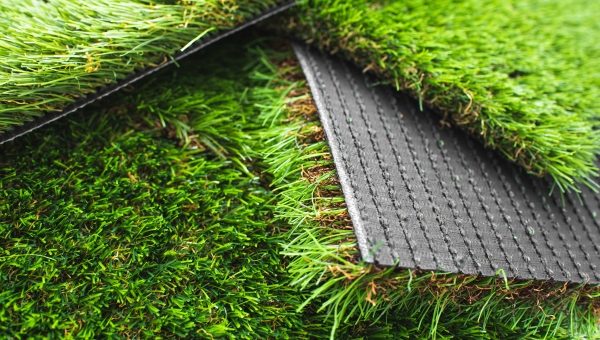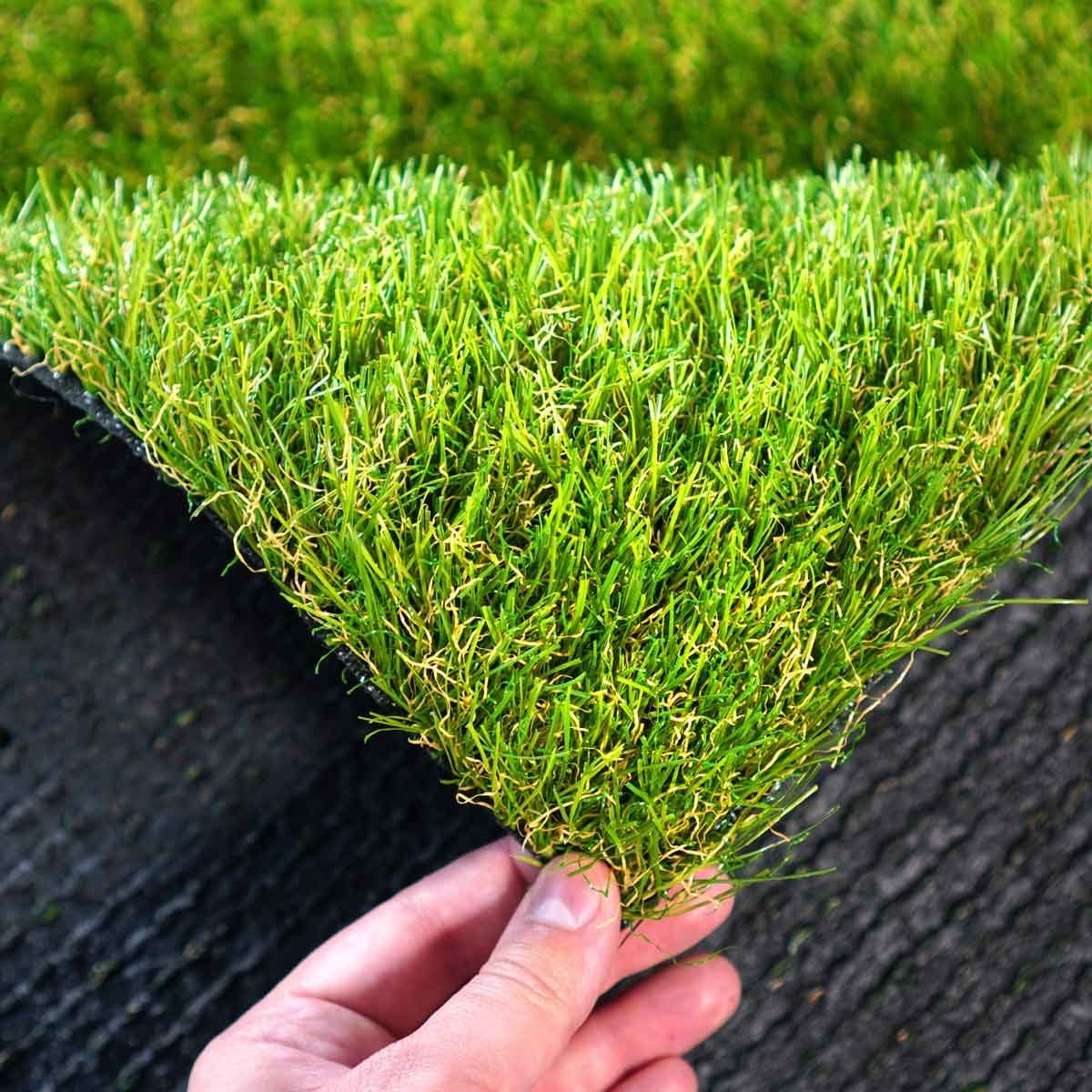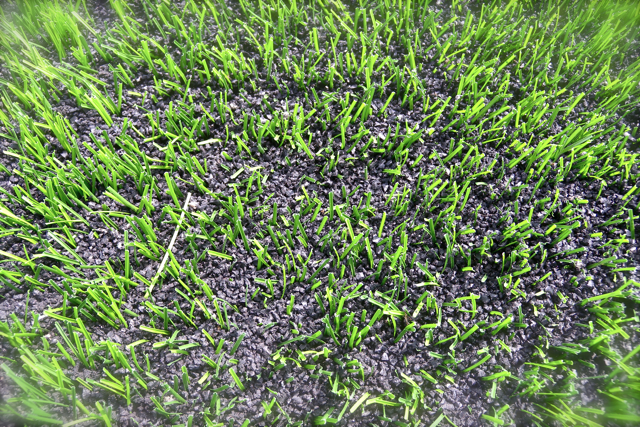Choose Trusted Artificial Turf Companies Phoenix for Your Landscaping Needs
Choose Trusted Artificial Turf Companies Phoenix for Your Landscaping Needs
Blog Article
Look Into the Environmental Advantages of Opting for Synthetic Grass Solutions
The adoption of man-made grass solutions provides an engaging possibility to resolve pushing environmental difficulties. By substantially reducing water usage and decreasing the application of damaging chemicals, these alternatives not only promote lasting landscape design however likewise secure neighborhood ecosystems.
Water Conservation Benefits
One of the most considerable benefits of synthetic grass is its capability to preserve water. In contrast, synthetic turf does not need watering, substantially reducing the total demand for water resources.
By eliminating the need for normal watering, synthetic grass adds to lasting landscape techniques and helps minimize the ecological impact of extreme water intake. The conservation of water extends to the decrease of overflow, which can lead to dirt erosion and river pollution.
In addition, the installment of synthetic grass allows municipalities and home owners to assign water sources extra efficiently, concentrating on vital usages such as drinking water and agriculture. The shift towards synthetic grass not just promotes responsible water use however additionally aligns with wider environmental objectives targeted at preserving natural sources.
As communities significantly prioritize sustainability, the water preservation benefits of fabricated turf present a compelling situation for its adoption in commercial and residential landscape design tasks.
Reduced Chemical Use
The change to synthetic lawn substantially decreases the dependence on chemical treatments commonly used in natural turf upkeep. Conventional grass administration typically entails the application of plant foods, pesticides, and herbicides to promote growth and control insects. These chemicals can pose risks to human health, regional wild animals, and the environment, adding to dirt and water contamination.
On the other hand, man-made lawn removes the need for these hazardous substances. When mounted, it requires very little upkeep, mainly containing regular cleansing and irregular infill replenishment. This reduction in chemical use not just profits the instant environment however additionally adds to more comprehensive ecological stability. By decreasing the launch of synthetic compounds into the ecological community, synthetic grass advertises healthier soil and water supply.
Moreover, the absence of chemical overflow connected with synthetic grass installations assists secure local rivers from air pollution, supporting marine life and maintaining biodiversity. Turf installation phoenix az. As areas progressively prioritize sustainable techniques, selecting synthetic grass presents a viable solution that straightens with environmental conservation objectives. Via this shift, home proprietors can delight in lavish green rooms without endangering ecological health and wellness, leading the way for a much more lasting future
Lower Carbon Impact

Furthermore, the installation of synthetic grass can cause considerable water conservation. All-natural yards require considerable quantities of water for watering, which not only contributes to the carbon impact related to water extraction and treatment however likewise pressures local water resources. On the other hand, man-made lawn needs very little maintenance, calling for no watering, thereby substantially decreasing water usage and its linked energy expenses.
Additionally, the durability of man-made lawn adds to its reduced carbon effect. With a life-span of up to 15 years or more, the requirement for frequent substitutes is lessened, leading to less waste and lower power usage in manufacturing and taking care of standard grass options. On the whole, synthetic grass provides a sustainable alternative for environmentally mindful landscape design.
Environment Conservation
Habitat preservation is a crucial consideration in the debate over landscape design selections, especially when contrasting artificial turf to all-natural yard. All-natural turf lawns frequently call for considerable maintenance, consisting of using chemicals, fertilizers, and herbicides, which can negatively impact neighborhood environments. These chemicals can seep right into the dirt and waterways, hurting native flora and animals and disrupting regional environments.
On the other hand, synthetic grass provides a possibility to decrease the environmental footprint of landscaping. By going with artificial turf, home owners can lessen the disturbance of natural habitats related to conventional yard treatment methods. Man-made site link lawn gets rid of the requirement for unsafe chemicals, therefore shielding neighboring wildlife and keeping the honesty of bordering ecological communities. The installment of artificial lawn can lead to the conversion of previous grass areas right into even more biodiverse landscapes, such as pollinator gardens or indigenous plant areas, which can support regional wild animals.
Eventually, the shift to artificial grass not only preserves water and minimizes maintenance initiatives yet additionally promotes a more unified partnership in between human activities and the natural surroundings, advertising habitat conservation at the same time.
Long-Term Sustainability
Lasting sustainability is a vital variable in evaluating the advantages of artificial turf over conventional turf yards. Among the most considerable advantages of fabricated turf is its durability; it can last as much as 15-20 years with minimal maintenance, whereas natural turf calls for frequent reseeding and substitute. This durability reduces the need for continuous resources, such as water, plant foods, and chemicals, which are important for maintaining a healthy grass yard.
Furthermore, artificial grass adds to a reduction in carbon discharges related to lawn treatment tools. Traditional yards typically call for gas-powered mowers, trimmers, and blowers, every one of which add to air contamination. Arizona artificial turf. On the other hand, synthetic lawn removes web link the need for such equipment, promoting a cleaner environment
Furthermore, the production of artificial lawn significantly utilizes recycled materials, find out here now boosting its sustainability account. As makers adopt eco-friendly techniques, the ecological impact of synthetic lawn remains to reduce.

Verdict
The fostering of fabricated turf options presents substantial ecological benefits, including substantial water preservation, minimized reliance on hazardous chemicals, and a reduced carbon impact. Man-made turf aids in maintaining all-natural environments by reducing land disturbance and advertising long-term sustainability via the usage of durable materials. Collectively, these aspects underscore the capacity of man-made grass to contribute favorably to environmental wellness and offer a sensible option to conventional landscaping methods in a progressively resource-conscious globe.
In contrast, artificial turf does not require watering, substantially minimizing the general demand for water sources. By lessening the release of synthetic compounds right into the ecological community, artificial lawn promotes much healthier dirt and water systems.
Moreover, the installation of synthetic lawn can result in considerable water conservation. In contrast, synthetic grass needs very little upkeep, needing no watering, thus dramatically decreasing water usage and its linked power expenses.

Report this page